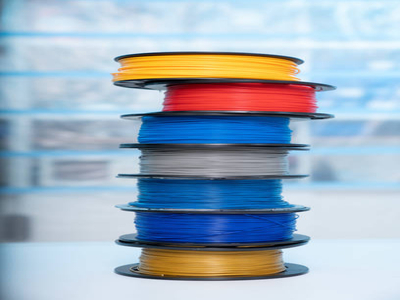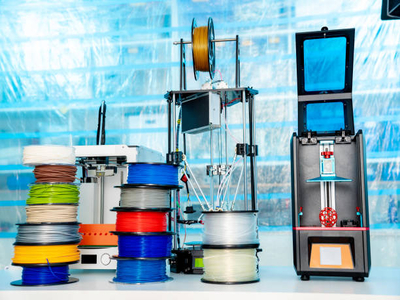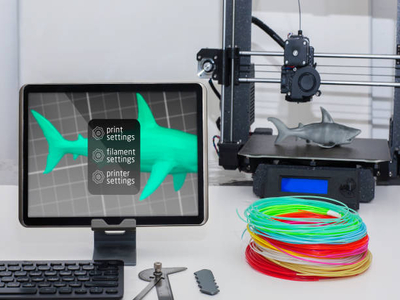When it comes to 3D printing filaments, there are a lot of choices out there.
But, what’s the difference between PLA vs PLA+?
This article will look at the key differences between these two types of filament and help you decide which one is right for your project.
PLA Vs PLA+: Understanding What Does It Mean?
PLA, or Polylactic Acid, is a plastic derived from renewable resources like corn starch.
It’s a popular choice for 3D printing filaments because it’s easy to print and has a low melting point.
PLA+ is made from sugarcane and is an improved version of PLA.
It’s been modified to have better performance characteristics, like improved layer adhesion and decreased warping.
Both materials are popular choices for 3D printing filament due to their low filament cost and easy printability.
However, there are some significant differences to consider when deciding which material to use for your next project.
For example, PLA+ filaments have a higher melting point than PLA filaments, making them ideal for high-temperature applications.
Let’s get into more detail!
Read our review of the Best PLA Filament options on the market!
9 Main Differences

PLA and PLA+ are two types of plastic that have become increasingly popular in recent years.
Both are derived from natural, plant-based materials, making these plastics a greener option than traditional petroleum-based plastics.
However, some key differences between the two can help inform your decision about which type is best suited for your needs.
Flexibility
PLA filaments are more flexible than PLA+ filaments, which can be advantageous if you need a material that is less likely to break or crack under strain.
However, PLA+ filaments offer more excellent stability and minor 3D print warping than PLA, making them ideal for high-temperature applications or projects that require a more rigid print.
Cost
PLA filaments tend to be less expensive than PLA+ filaments, making them a budget-friendly option.
However, PLA+ filaments offer superior print quality and durability performance, so you may find that the extra cost is worth it for your specific application.
Temperature Existence
PLA filaments can only be used for temperatures up to 356 degrees Fahrenheit, while PLA+ filaments can withstand temperatures up to 428 degrees Celsius.
This means that PLA+ is the better option for high-temperature applications, and the higher the print temperature, the better!
Now you know that PLA+ can handle higher temperatures, but how do you know what the perfect temperature is for your project? Watch the video below to find out!
Toughness And Strength

PLA is a relatively 3D solid printer filament despite its low price. It’s stronger than even the best ABS filament and has less brittle properties.
This makes it more suitable for demanding applications, like those found in commercial buildings or schools where durability matters most.
PLA+ filaments, on the other hand, are generally more rigid and more robust than PLA filaments.
This increased strength is because PLA+ filaments have a higher melting point than PLA.
The increased melting point allows for a stronger bond between the individual polymer chains, resulting in a more challenging overall material.
Everyday use for PLA+ filaments is in high-temperature applications, where the increased strength and heat resistance can be beneficial.
Printing Ease
PLA filaments are generally easier to print than PLA+ filaments, making them preferred for beginners.
They offer an outstanding balance of easy printability and durability, making them an excellent all-around 3D printing filament.
PLA+ filaments are more challenging to print with because they require higher print temperatures and generally have lower layer adhesion.
However, this increased difficulty is offset by the superior characteristics of PLA+ over PLA, making it the go-to choice for high-performance applications.
Colors And Finishes
PLA and PLA+ filaments are available in various colors and finishes.
You can find both materials in everything from bright, vibrant colors to wood-like and metallic finishes.
PLA+ filaments tend to have a more consistent color throughout the print, while PLA filaments may have a slight hue shift as the filament melts and extrudes.
Quality Of The Surface

PLA filaments produce prints with a glossy finish that is smooth to the touch.
PLA+ filaments also produce prints with a glossy finish, but the print surface may be textured depending on the print temperature and layer adhesion.
When it comes to PLA vs. PLA+, the difference is clear: PLA+ filaments offer superior performance and print quality, making them an ideal option.
Storage And Shelf Life
PLA and PLA+ filaments should be stored in a cool, dry place to prevent warping and degradation.
Both filaments can be stored for several months or longer without issue.
However, it’s essential to keep an eye on the material and replace it if you notice any signs of degradation.
In addition, PLA+ filaments tend to have a slightly longer shelf life than PLA filaments, as the higher melting point prevents degradation at elevated temperatures.
Pricing
PLA and PLA+ filaments are reasonably inexpensive, but PLA+ filaments tend to be a bit more expensive than PLA filaments.
The increased price is due to the higher quality of PLA+ filaments and that they are generally only available from specialty retailers.
So, Which One Should You Choose?
Although PLA filaments are an excellent option for many applications, PLA+ filaments offer superior performance and print quality.
Whether you’re looking for a high-performance filament for demanding applications or want the best possible print quality, PLA+ is the way to go.
PLA+ filaments are ideal for high-performance or demanding applications, as they offer increased strength and heat resistance.
If you’re looking for a reliable 3D printing filament that will produce consistent results, PLA+ is the better choice.
Final Words
Now that you know all about PLA vs PLA+, it’s time to decide which is best for your business.
If you need a reliable and consistent 3D printing filament, PLA+ is the way to go.
If you’re looking for an easy-to-use 3D printing filament, PLA is a great option.
Articles You Might Enjoy Reading: